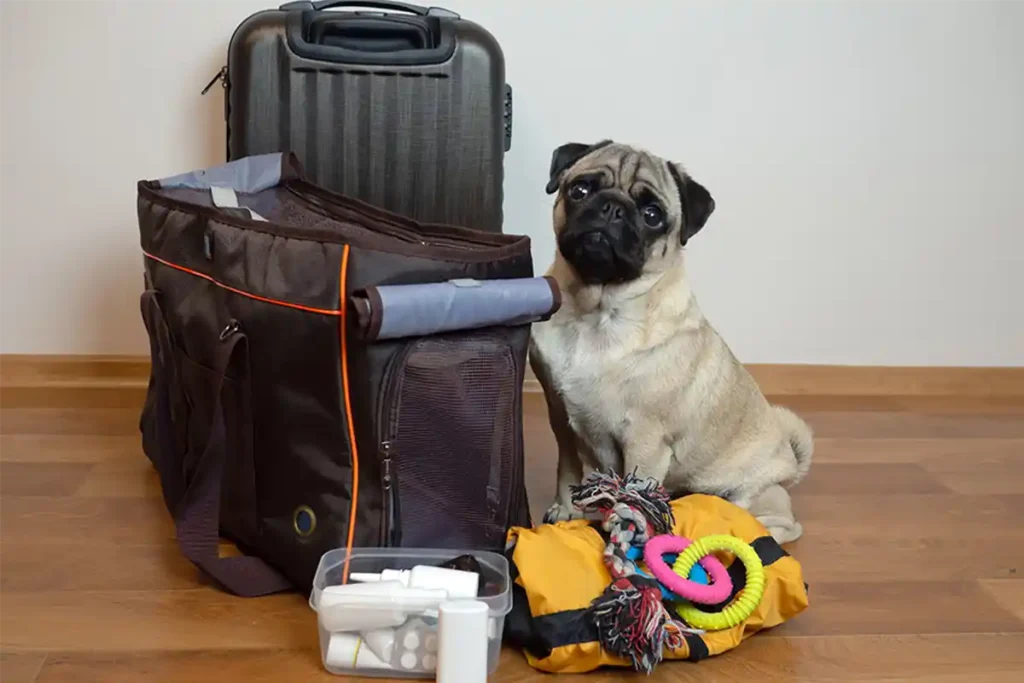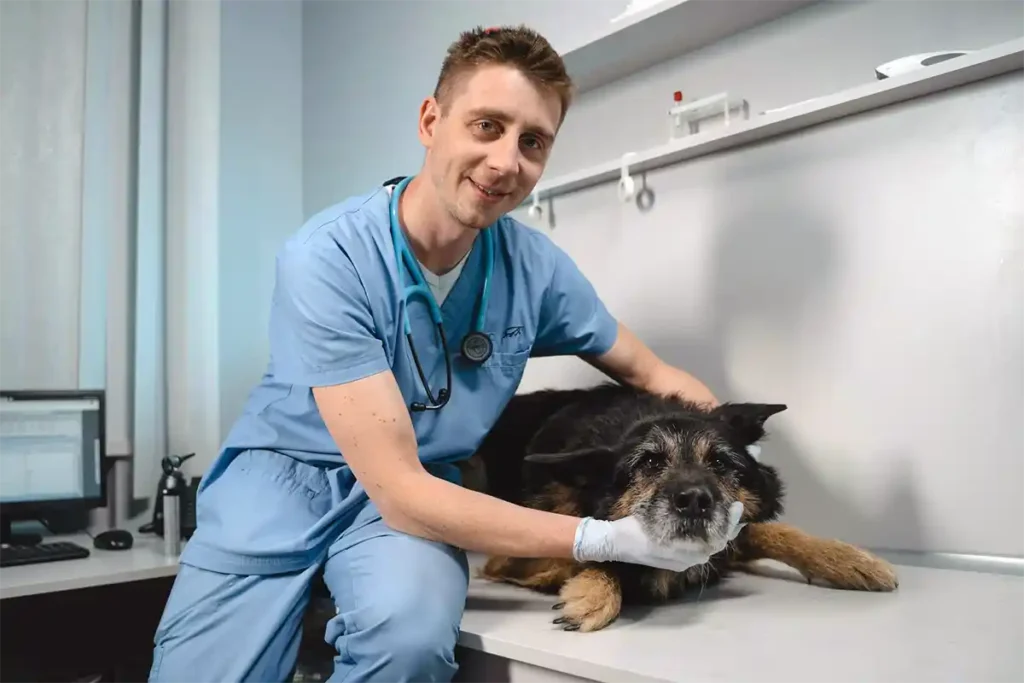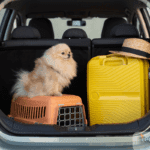As pet owners, the safety and well-being of our furry companions are always top priorities. But what happens in an emergency? Knowing how to act swiftly can save lives. Studies reveal that 60% of pet emergencies can be mitigated with proper first aid, yet most owners feel unprepared. This guide provides practical, expert-backed advice to help you confidently handle emergencies and protect your pet in critical moments. For a broader understanding of pet emergencies, check out our Veterinarian’s Complete Dogs Emergency Guide.
Why Pet First Aid Matters
Emergencies can strike when we least expect them—an excited pup swallows a toy, or a curious cat ingests a toxic plant. Quick thinking and preparation can prevent minor injuries from escalating.
Case in Point: Max, a Labrador retriever, started choking on a ball during playtime. His owner’s prompt Heimlich maneuver saved his life. These moments highlight the value of knowing basic first aid.
Key Takeaway: Preparation bridges the gap between a safe recovery and an emergency becoming life-threatening.
Accidents like poisoning or injuries can escalate quickly without prompt action. If you’re interested in learning more about specific toxic hazards, read our Toxic Plants for Dogs: A Comprehensive Vet-Approved Reference Guide.

Building Your Pet First Aid Kit
A first aid kit tailored to your pet’s needs is indispensable. Here’s how to create one that covers all bases:
Essential Items for Every Kit
- Sterile Gauze and Adhesive Tape: For dressing wounds and controlling bleeding.
- Digital Thermometer: Ensure it’s designed for pets for accurate temperature readings.
- Antiseptic Wipes or Solution: Clean minor cuts without causing irritation.
- Tweezers and Scissors: For removing foreign objects like splinters.
- Hydrogen Peroxide (3%): To induce vomiting, but only under veterinary guidance.
- Emergency Contacts: Your veterinarian’s number and the Pet Poison Helpline (U.S. – 800-213-6680).
Expert Veterinary Tip: Dr. Esther Knoetze recommends reviewing your kit every six months to replace expired items and adapt to your pet’s changing needs.
Organization Tips
- Use a clear, waterproof container for visibility and protection.
- Include a checklist to ensure nothing is missing.
A comprehensive first aid kit can save critical time during emergencies. To prepare your home and ensure safety, review our Dog-Proofing Your Home: Safety Tips for Every Room article for practical insights

Handling Common Emergencies
Choking
Choking is one of the most common and urgent pet emergencies.
Signs of Choking:
- Gagging or coughing.
- Difficulty breathing.
- Pawing at the mouth.
Steps to Help:
- Open your pet’s mouth and gently remove visible objects. Use caution to avoid pushing it further down.
- If unsuccessful, perform a modified Heimlich maneuver:
- For dogs: Place your hands just below their ribcage and apply quick, firm pressure.
- For cats: Hold them with their back against your chest and apply gentle upward thrusts.
One of the most alarming emergencies, choking requires quick action. Explore more detailed steps in our Vet-Approved Cat Emergency Guide for feline-specific situations.
Poisoning
Poisoning can happen from ingesting household chemicals, human medications, or toxic foods like chocolate.
Common Signs of Poisoning:
- Drooling or foaming at the mouth.
- Vomiting or diarrhea.
- Seizures or tremors.
Steps to Help:
- Remove your pet from the source of poisoning.
- Identify the toxin—keep labels or packaging if possible.
- Contact your vet or the Pet Poison Helpline immediately.
- Avoid inducing vomiting unless directed by a veterinarian.
For a deeper dive into poison prevention and care, see our article on Preventing Cat Poisonings: Essential Tips and Emergency Advice for Pet Owners.
Bleeding and Wounds
Pets are naturally curious, which often leads to cuts and scrapes. While minor wounds can be managed at home, severe bleeding requires immediate action.
Steps to Treat Bleeding and Wounds:
- Stop the Bleeding: Use sterile gauze to apply gentle pressure to the wound. If bleeding persists after 5-10 minutes, seek veterinary care immediately.
- Clean the Wound: Rinse the area with lukewarm water or a pet-safe antiseptic solution. Avoid alcohol-based cleaners, which may sting.
- Protect the Wound: Cover with a non-stick dressing and secure it with vet wrap or adhesive tape. Ensure the bandage isn’t too tight to cut off circulation.
Expert Tip: Monitor your pet closely for signs of infection, such as swelling, redness, or discharge. Dr. Knoetze advises scheduling a vet visit if any of these symptoms appear.
Fractures
Fractures are painful and often immobilize your pet. Handling them gently can prevent further damage.
Steps to Manage Fractures:
- Minimize Movement: Keep your pet calm and still to avoid worsening the injury.
- Immobilize the Area: Use a flat surface like a stiff piece of cardboard or a padded splint to stabilize the limb.
- Transport Safely: Support your pet’s body evenly while moving them to the vet.
Tailwaggors Tip: Avoid trying to reset the bone yourself—this should only be done by a veterinarian.

CPR for Pets: A Life-Saving Skill
CPR (Cardiopulmonary Resuscitation) can save your pet’s life in cases of cardiac arrest or respiratory failure. While the techniques for dogs and cats are similar, some key differences make it essential to know the specifics for each species.
CPR for Dogs
Performing CPR on dogs depends on their size. Here’s a step-by-step guide:
1. Check for Breathing and Pulse:
- Place your hand on the widest part of the chest to feel for a heartbeat.
- Observe the nostrils for airflow or look for chest movement.
- If there’s no breathing or heartbeat, begin CPR immediately.
2. Position Your Dog:
- Lay the dog on their right side on a flat surface. Ensure the airway is clear by gently extending the neck and opening the mouth to check for blockages.
3. Perform Chest Compressions:
- For Large Dogs: Place both hands on the widest part of the chest, one hand over the other. Compress the chest to 1/3 to 1/2 of its depth at a rate of 100 compressions per minute.
- For Medium or Small Dogs: Use one hand to press the chest in the same rhythm and depth.
- For Barrel-Chested Breeds (like Bulldogs): Lay them on their back and compress the sternum directly.
4. Administer Rescue Breaths:
- Close the dog’s mouth and create a seal around their nose with your mouth.
- Exhale firmly to ensure their chest rises. Give two breaths after every 30 compressions.
5. Continue Until Help Arrives:
Alternate between compressions and breaths (30:2 ratio) until the dog shows signs of recovery or veterinary help takes over.
Note: Always seek professional veterinary care immediately after performing CPR, even if your dog recovers.
CPR for Cats
Cats are smaller and more delicate, so CPR requires a gentler approach. Follow these steps:
1. Check for Breathing and Pulse:
- Place your fingers over the cat’s chest, just behind the elbow of the front leg, to feel for a heartbeat.
- Observe the nostrils for airflow or look for chest movement.
2. Position Your Cat:
- Lay the cat on their right side on a flat surface. Ensure their airway is clear by gently extending the neck and opening the mouth to check for blockages.
3. Perform Chest Compressions:
- Use your thumb and forefinger to gently compress the chest.
- Aim to compress 1/3 to 1/2 of the chest depth at a rate of 100-120 compressions per minute.
- For larger cats, you may use one hand, pressing over the heart area.
4. Administer Rescue Breaths:
- Close the cat’s mouth and gently exhale into their nose, ensuring their chest rises.
- Alternate 30 compressions with 2 rescue breaths.
5. Continue Until Help Arrives:
Perform CPR continuously until you detect a heartbeat or reach a veterinary clinic.
Expert Tip: Regularly practicing CPR techniques on a pet CPR dummy can prepare you for real-life emergencies.
Critical Notes for Both Dogs and Cats:
- Do not perform CPR if your pet is breathing and has a heartbeat, as this can cause harm.
- Practice CPR techniques under professional guidance to ensure accuracy and confidence during emergencies.
- Always transport your pet to a veterinarian immediately after administering CPR.
By mastering these techniques, you can be a lifeline for your pet in critical moments.

When to Seek Veterinary Care
Certain symptoms signal emergencies that require immediate veterinary attention. Recognizing these can save precious time.
Red Flags to Watch For:
- Difficulty breathing or unresponsive behavior.
- Persistent vomiting, diarrhea, or seizures.
- Signs of pain like excessive whining or inability to move.
Quick Reference Table:
| Symptom | Recommended Action |
|---|---|
| Difficulty breathing | Call your vet or an emergency clinic immediately. |
| Severe bleeding | Apply pressure and transport to the vet. |
| Ingestion of toxins | Contact the Pet Poison Helpline. |
Recognizing when professional help is required can be life-saving. If you’re unsure about specific signs to watch for, our 11 Warning Signs You Should Take Your Dog to the Vet is a valuable resource.
Preventing Pet Emergencies
Prevention is your first line of defense against emergencies. A proactive approach not only safeguards your pet but also minimizes stress and costly veterinary visits. Discover actionable tips to pet-proof your home in our guide on The Complete Guide to Cat Proofing Your Home.
Home Safety Tips
Pets are naturally curious, which makes household hazards a common cause of emergencies.
- Use Pet-Safe Cleaning Products: Many cleaning solutions contain chemicals that are toxic to pets. Opt for non-toxic alternatives.
- Secure Dangerous Items: Store medications, sharp objects, and electrical cords out of reach.
- Avoid Toxic Plants: Common household plants like lilies, philodendrons, and aloe vera can be fatal if ingested.
Tailwaggors Tip: Keep an updated list of toxic plants handy to cross-check when bringing new plants into your home.
Outdoor Safety Tips
Outdoor adventures can expose your pet to potential risks. Simple precautions can make these excursions safer.
- Use a Leash: Unfamiliar environments can lead to unexpected behavior, including running into traffic.
- Be Mindful of Weather: Extreme heat or cold can harm your pet. Always provide shade, water, and protection from the elements.
- Supervise Playtime: Prevent access to harmful objects like sharp rocks or contaminated water.
Expert Tip: Dr. Knoetze advises checking for ticks and injuries after outdoor activities, especially in wooded or grassy areas.
Outdoor environments pose unique challenges. Learn how to ensure harmonious playtimes between pets with our How to Help Your Dog and Cat Coexist: The Ultimate Guide for Pet Harmony
Interactive Emergency Scenarios
Learning through scenarios helps reinforce your first aid knowledge. Test yourself with these common emergencies:
Scenario 1: Your Dog Eats Chocolate
- Assess the situation: How much chocolate was consumed? What type (dark, milk, or white chocolate)?
- Immediate action: Remove any remaining chocolate and contact your vet or the Pet Poison Helpline.
- Follow their instructions for next steps.
Scenario 2: Your Cat Cuts Its Paw on Glass
- Stop the bleeding: Apply gentle pressure with sterile gauze.
- Clean the wound: Rinse with a pet-safe antiseptic solution.
- Secure the area: Bandage the paw and contact your veterinarian.
Interactive Feature: The Pet First Aid Scenario Quiz to test your knowledge and practice real-life decision-making.
Test your preparedness with our interactive tools and quizzes. For more scenario-based tips, see The Complete Guide to Fostering Positive Dog Behavior
Pet First Aid Scenario Quiz
Test your knowledge and see how prepared you are to handle pet emergencies!
1. What should you do if your dog eats chocolate?
2. How do you check if your pet is breathing?
3. What is the correct CPR compression-to-breath ratio for pets?

Frequently Asked Questions
Q1: What should I include in a pet first aid kit?
Preparing a pet first aid kit is an essential step in emergency readiness. Your kit should include:
- Sterile Gauze and Adhesive Tape: For dressing wounds and stopping bleeding.
- Antiseptic Wipes or Solution: To safely clean minor cuts.
- Digital Thermometer: Specifically designed for pets.
- Tweezers and Scissors: For removing foreign objects or cutting bandages.
- Hydrogen Peroxide (3%): To induce vomiting, but only under veterinary guidance.
- Emergency Contacts: Your veterinarian’s number and the Pet Poison Helpline (800-213-6680).
Tailwaggors Tip: Review your kit every six months to replace expired items and adapt to your pet’s needs. For a detailed checklist, see our guide on Building a Pet First Aid Kit.
Q2: How can I tell if my pet is having an emergency?
Emergencies can be stressful, but recognizing the signs early is key. Watch for:
- Difficulty breathing or choking.
- Persistent vomiting or diarrhea.
- Unconsciousness, seizures, or unusual lethargy.
For a complete list of warning signs, check out our article 11 Warning Signs You Should Take Your Dog to the Vet.
Q3: How do I perform CPR on my pet?
Performing CPR can save your pet’s life in a cardiac or respiratory emergency. Here’s how:
- Lay your pet on their side: Ensure they’re on a flat, stable surface.
- Check for breathing and a heartbeat: Place your hand on their chest or look for chest movement and airflow near their nose.
- Perform chest compressions:
- For Large Dogs: Use both hands, pressing on the widest part of the chest.
- For Small Dogs and Cats: Use one hand or your fingers to compress the chest gently.
- Administer rescue breaths: Close your pet’s mouth and exhale into their nose, ensuring their chest rises.
Expert Veterinary Tip: Dr. Esther Knoetze recommends practicing CPR techniques with a professional to ensure you’re prepared during an emergency. Learn more in our Pet CPR Guide.
Q4: What should I do if my pet is choking?
Choking is a common emergency, and quick action is vital. Here’s what to do:
- Open your pet’s mouth and remove any visible objects with tweezers or your fingers.
- If the object is inaccessible, perform a modified Heimlich maneuver:
- For Small Pets: Hold your pet with their back against your chest and apply firm, upward thrusts below the ribcage.
- For Large Pets: Stand behind your dog, wrap your arms around their abdomen, and apply quick, firm pressure just below the ribcage.
For more details, read our Vet-Approved Emergency Guide.
Q5: How do I treat a wound on my pet?
Treating wounds promptly reduces the risk of infection. Follow these steps:
- Stop the bleeding: Apply gentle pressure with sterile gauze.
- Clean the wound: Rinse with lukewarm water or a pet-safe antiseptic. Avoid using hydrogen peroxide or alcohol.
- Protect the wound: Cover with a non-stick dressing and secure it with adhesive tape or vet wrap.
Tailwaggors Tip: If you notice swelling, redness, or discharge, contact your veterinarian immediately. Learn more in our Wound Care for Pets article.
Q6: What are common household toxins for pets?
Common toxins include chocolate, xylitol (found in sugar-free gum), certain houseplants (like lilies), and human medications. Keep these items out of reach and read our Toxic Plants for Pets Guide to learn more.
Q7: Can I use human medications for my pet?
No. Many human medications, such as ibuprofen or acetaminophen, are toxic to pets. Never administer medications without consulting your veterinarian.
Q8: What should I do if my pet eats chocolate?
- Remove any remaining chocolate to prevent further ingestion.
- Note the type (dark chocolate is more toxic than milk chocolate) and the amount consumed.
- Call your vet or the Pet Poison Helpline immediately (800-213-6680) for guidance.
Q9: How can I prevent emergencies with my pet?
Prevention is the best strategy for protecting your pet:
- Pet-proof your home by removing hazards like toxic plants and choking hazards.
- Supervise outdoor activities, especially in unfamiliar environments.
Learn more in our Cat Proofing Your Home Guide.
Q10: When should I seek veterinary care versus handling it at home?
If your pet has minor cuts or mild digestive upset, you can manage it with basic first aid. However, symptoms like difficulty breathing, severe bleeding, or seizures require immediate veterinary attention.
This enhanced FAQ section is now tailored for SEO, enriched with empathetic language, expert tips, and actionable links to improve user engagement and credibility. Let me know if you’d like additional refinements!
Conclusion
Emergencies can be overwhelming, but preparation is the key to protecting your pet. By building a well-stocked first aid kit, learning basic first aid techniques, and knowing when to seek veterinary care, you’re equipped to handle unexpected situations with confidence.
Final Call to Action: “Your pet’s safety depends on you. Bookmark this guide, share it with fellow pet owners, and download our First Aid Checklist today to stay prepared!”
Meet your pet’s first aid guide—an essential resource to keep your furry friend safe in emergencies!
🐾✨ Learn life-saving tips, create a first aid kit, and handle emergencies with confidence in this must-read guide.
Share with fellow pet lovers and help keep all pets happy and healthy! ❤️🐕🐈











